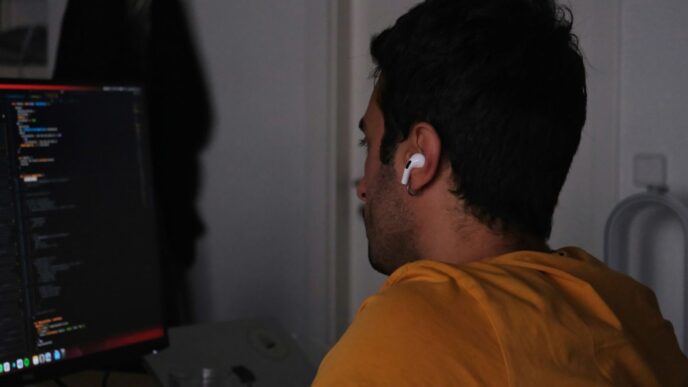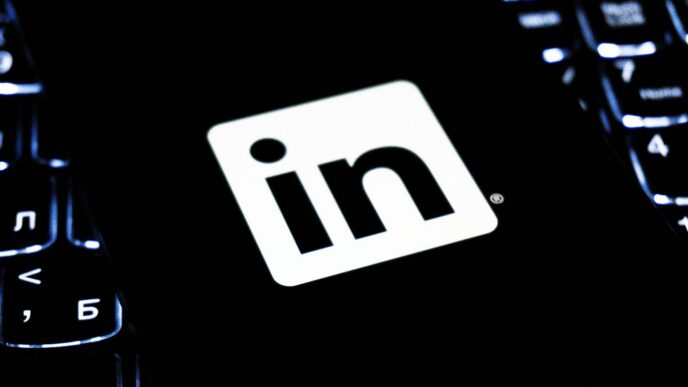Tech lawsuits are a big deal these days. They’re not like regular lawsuits because technology changes so fast. This article will talk about how these lawsuits work, who’s involved, and what new tech means for legal cases. We’ll also cover things like data privacy, social media issues, and protecting new ideas. It’s a lot to keep track of, but we’ll try to make it simple.
Key Takeaways
- Tech lawsuits are different from old-school legal fights because technology moves so fast.
- Things like data privacy rules and social media problems are a big part of modern tech lawsuits.
- Protecting new ideas, like software and inventions, is a major reason for tech lawsuits.
- Collecting digital stuff, like emails and files, is super important when you’re dealing with a tech lawsuit.
- New tech, like AI and blockchain, is changing how legal cases are handled and what kinds of risks companies face.
Understanding the Landscape of a Tech Lawsuit

Defining Modern Tech Lawsuits
So, what exactly is a modern tech lawsuit? It’s not just about faulty gadgets anymore. We’re talking about cases involving data privacy, intellectual property disputes, social media harms, and a whole lot more. These lawsuits often involve complex technology, making them different from your average legal battle. They can range from a small business accusing a larger company of stealing its software code to massive class-action suits against social media giants.
Key Players in Tech Litigation
Who’s involved in these tech showdowns? You’ve got the plaintiffs (the ones bringing the suit), the defendants (the ones being sued), and of course, the lawyers. But it goes deeper than that. Expert witnesses play a huge role, explaining complicated tech stuff to judges and juries. Think cybersecurity specialists, software engineers, and data analysts. Regulatory bodies like the FTC can also get involved, especially in cases about data privacy or antitrust issues. It’s a whole ecosystem of people and organizations.
The Evolving Nature of Digital Disputes
Tech is always changing, and so are the lawsuits that come with it. What was a big deal five years ago might be old news now. For example, the rise of AI is creating new legal questions about liability and copyright. The metaverse? That’s a whole new can of worms when it comes to harassment and data security. Keeping up with these changes is key to understanding the current landscape of tech litigation. The law is always playing catch-up, and that makes for some interesting (and often messy) legal battles.
Navigating Data Privacy Legislation and Lawsuits
Data privacy is a huge deal these days, and it’s only getting more complicated. With new laws popping up all over the globe, and the ever-present threat of data breaches, it’s a minefield for tech companies. Let’s break down some key aspects of dealing with data privacy in the legal world.
Impact of Global Data Regulations
Global data regulations are changing the game. The impact of GDPR mobile logo in Europe, for example, has been massive, forcing companies to rethink how they collect, store, and use personal data. Other countries are following suit with their own versions of data protection laws. This patchwork of regulations creates a headache for businesses operating internationally. You have to stay on top of all these different rules, which can be tough. It’s not just about compliance; it’s about building trust with your users. If people don’t trust you with their data, they’re less likely to use your products or services.
Protecting Sensitive User Information
Protecting user data is not just a legal requirement; it’s an ethical one. Here are some things to keep in mind:
- Encryption: Make sure you’re encrypting sensitive data both in transit and at rest. This makes it much harder for hackers to access the information, even if they manage to breach your systems.
- Access Controls: Limit access to sensitive data to only those employees who need it. Implement strong authentication measures, like multi-factor authentication, to prevent unauthorized access.
- Data Minimization: Only collect the data you absolutely need. The less data you have, the less risk you face in the event of a breach.
- Regular Audits: Conduct regular security audits to identify vulnerabilities in your systems and processes. Fix those vulnerabilities ASAP.
Consequences of Data Breaches
Data breaches can be devastating. The consequences go way beyond just financial penalties. Think about the damage to your reputation, the loss of customer trust, and the potential for lawsuits. The cost of a data breach can easily run into the millions of dollars, and that’s before you even consider the long-term impact on your business. Plus, there’s the regulatory scrutiny. Regulators are cracking down hard on companies that fail to protect user data, and they’re not afraid to issue hefty fines. It’s better to invest in data protection upfront than to deal with the fallout from a breach later. It’s like search functionality – you don’t think about it until you need it, but when you do, you really need it.
Social Media Harm Lawsuits: Protecting Victims
Social media, while connecting people, can also be a breeding ground for harm. It’s not just about hurt feelings; it’s about real-world consequences stemming from online actions. Think about it: cyberbullying leading to mental health crises, defamation impacting careers, and the spread of misinformation causing tangible damage. It’s a complex area, and the law is still trying to catch up with the speed of online interaction.
Addressing Online Harassment and Abuse
Online harassment and abuse are serious problems. It’s easy to hide behind a screen and say things you’d never say in person. But words have power, and online harassment can have devastating effects on victims. Social media platforms have a responsibility to protect their users, but often fall short. Victims can experience anxiety, depression, and even suicidal thoughts as a result of relentless online attacks. Holding perpetrators accountable is key, and that’s where lawsuits come in. These lawsuits aim to provide victims with a path to justice and compensation for the harm they’ve suffered. It’s about sending a message that online abuse won’t be tolerated.
Statute of Limitations in Social Media Cases
Time is of the essence in social media harm cases. The statute of limitations, which is the time you have to file a lawsuit, varies depending on the state and the type of harm. For example, defamation cases often have a shorter statute of limitations than cases involving physical harm. It’s important to act quickly if you believe you have a case. Don’t wait until it’s too late. Consulting with an attorney as soon as possible is crucial to understand your rights and options. Missing the deadline means you lose your chance to seek justice. Here’s a simplified example:
| Type of Harm | Example State | Statute of Limitations |
|---|---|---|
| Defamation | California | 1 year |
| Cyberstalking | New York | 3 years |
| Intentional Infliction of Emotional Distress | Texas | 2 years |
Initiating a Social Media Harm Lawsuit
So, you’ve been harmed on social media and want to take action. What’s next? First, document everything. Keep records of the harassing posts, messages, and any other evidence of the abuse. This includes screenshots, timestamps, and any identifying information about the perpetrator. Second, consult with an attorney who specializes in social media harm cases. They can evaluate your case, advise you on your legal options, and help you navigate the complex legal process. Third, be prepared for a potentially long and challenging legal battle. These cases can be complex and emotionally draining, but with the right legal support, you can fight for justice and hold those responsible accountable. If you or a loved one have been harmed, don’t hesitate to seek help. There are resources available to support you through this difficult time.
Intellectual Property Disputes in Tech
Safeguarding Software and Innovations
Tech companies live and die by their innovations. Protecting those innovations is super important, but it’s also a huge headache. We’re talking about things like source code, algorithms, and unique functionalities. The goal is to prevent others from copying or profiting from your hard work. This often involves patents, copyrights, and trade secrets, all working together to create a legal shield around your tech assets. It’s not a one-time thing; it’s an ongoing process of monitoring and enforcement.
Copyright and Patent Infringement
Okay, so someone’s using your stuff without permission. Now what? Copyright infringement covers things like software code and documentation, while patent infringement deals with the actual inventions. Figuring out if infringement actually happened can be tricky. You need to prove that the other party had access to your protected material and that their product is substantially similar. It’s not always a clear-cut case, and that’s where things get messy. You might need a trademark lawyer in Buffalo to help you out.
Trade Secret Protection in Tech
Trade secrets are a bit different. They’re confidential information that gives your business a competitive edge. Think of the secret sauce recipe, but for software. Unlike patents, trade secrets can last forever, as long as you keep them secret. But that’s the catch – you have to actively protect them. This means things like:
- Limiting access to the information
- Using non-disclosure agreements (NDAs)
- Implementing security measures to prevent leaks
If a trade secret gets stolen, you can sue for damages. But proving that it was a trade secret and that it was misappropriated can be a tough battle. And with employees moving between companies all the time, it’s a risk you always have to manage. It’s a constant balancing act between innovation and protection.
Litigation Strategies for a Tech Lawsuit
Tech lawsuits can be a real headache. They’re not like your average fender-bender. The stakes are high, the tech is complicated, and the legal landscape is constantly shifting. So, what’s the game plan when you find yourself in one of these battles?
Gathering Digital Evidence
Okay, so first things first: you gotta get your hands on the evidence. And in the tech world, that means digital evidence. Think emails, server logs, code repositories, social media posts – the whole shebang. It’s not just about finding the smoking gun; it’s about piecing together the whole story. You need to be ready to use eDiscovery tools to sift through mountains of data.
- Preservation is Key: The moment you suspect a lawsuit, put a legal hold on everything. Don’t let anyone delete or alter anything. Seriously.
- Metadata Matters: It’s not just what the document says, it’s when it was created, who created it, and how it was modified. Metadata can be gold.
- Chain of Custody: Document everything. Where did the evidence come from? Who handled it? How was it stored? If you can’t prove the chain of custody, the evidence might be thrown out.
Selecting Expert Legal Counsel
Look, you wouldn’t ask your family doctor to perform open-heart surgery, right? Same goes for tech lawsuits. You need a lawyer who gets tech. Someone who understands the nuances of software development, data privacy, or intellectual property. They should have a proven track record in similar cases.
- Tech Savvy: They should be able to talk the talk with engineers and explain complex concepts to a judge.
- Industry Experience: Bonus points if they’ve worked in the tech industry themselves.
- Litigation Experience: Make sure they’re not just tech experts, but also seasoned litigators who know how to win in court.
Settlement Versus Trial Considerations
Alright, so you’ve got your evidence and your legal dream team. Now what? Well, you need to decide whether to settle or go to trial. Trials are expensive, time-consuming, and risky. Settlements are often quicker and cheaper, but you might not get everything you want. It’s a tough call. Here’s a quick rundown:
| Factor | Settlement | Trial |
|---|---|---|
| Cost | Lower | Higher |
| Time | Faster | Slower |
| Risk | Lower (predictable outcome) | Higher (unpredictable outcome) |
| Control | More control over the outcome | Less control (jury decides) |
| Publicity | Less publicity | More publicity |
Ultimately, the decision depends on the specifics of your case, your risk tolerance, and your goals. Don’t be afraid to explore settlement options, but be prepared to fight if necessary.
The Role of Emerging Technologies in Lawsuits
AI and Machine Learning in Legal Cases
Okay, so AI is making its way into courtrooms, and it’s kind of a big deal. AI and machine learning can sift through mountains of documents way faster than any human ever could. Think about it: discovery in a tech case can involve millions of emails, code snippets, and system logs. AI can help lawyers find the smoking gun, or at least the relevant evidence, much quicker. But it’s not all sunshine and roses. There are questions about bias in algorithms, how reliable the AI’s findings are, and who’s responsible when the AI gets it wrong. It’s a brave new world, and the legal system is still trying to figure out the rules. For example, AI can help with legal frameworks to adapt to these changes.
Blockchain’s Impact on Evidence
Blockchain is usually associated with cryptocurrency, but it has other uses too. One of them is in securing and verifying evidence. Because blockchain creates a permanent, unchangeable record, it can be used to prove that a piece of digital evidence hasn’t been tampered with. This is especially important in cases involving digital contracts, intellectual property, or any situation where the authenticity of digital data is key. Imagine a scenario where a software company claims its code was stolen. If the original code was timestamped and stored on a blockchain, it would be much harder for the defendant to argue they came up with it independently. It’s not a silver bullet, but it adds a layer of security and trust to digital evidence. Here’s a quick rundown:
- Immutable records
- Enhanced data security
- Improved audit trails
Cybersecurity and Litigation Risks
With more and more data being stored online, cybersecurity is a huge concern for everyone, including lawyers. A data breach can not only expose sensitive client information but also create new avenues for litigation. If a company’s negligence leads to a data breach that harms its customers, those customers can sue. And it’s not just about external hackers; sometimes, the biggest risks come from inside the organization. Companies need to have strong cybersecurity policies in place, and they need to be able to prove they took reasonable steps to protect their data. Otherwise, they could be facing a costly lawsuit. It’s a constant battle to stay ahead of the threats, and the stakes are only getting higher. Social media offers access to personal information that can make or break a case.
International Dimensions of a Tech Lawsuit
Cross-Border Jurisdiction Challenges
Okay, so you’ve got a tech lawsuit. Seems complicated enough, right? Well, throw in some international elements, and things get really interesting. One of the first hurdles is figuring out which court even has the authority to hear the case. Is it the US, where the company is headquartered? Or maybe the country where the damage actually occurred? It’s not always clear-cut. Different countries have different rules about when their courts can exercise jurisdiction over a foreign company or individual.
- The "minimum contacts" test in the US requires a company to have sufficient connections to a state before a court there can exercise jurisdiction.
- Some countries might assert jurisdiction based on where the servers are located, even if the company has no other presence there.
- Enforcement of data privacy laws like GDPR can create jurisdiction issues if a company processes data of EU citizens, regardless of where the company is based.
Enforcing Judgments Globally
Let’s say you win your tech lawsuit. Awesome! But what if the defendant’s assets are all overseas? Getting that judgment enforced across borders can be a major headache. You can’t just waltz into another country and start seizing assets. You usually have to go through their legal system, and they might not recognize the US judgment. There are international treaties and agreements that can help, but they don’t always apply, and the process can be slow and expensive. It’s important to consider international social media harm lawsuits and their global perspective.
Consider these factors when trying to enforce a judgment:
- Reciprocity: Does the other country recognize US judgments? Some do, some don’t.
- Treaties: Are there any treaties between the US and the other country that simplify the enforcement process?
- Asset Location: Where are the defendant’s assets actually located? This will determine which country’s legal system you need to navigate.
Harmonizing International Tech Laws
One of the biggest challenges in international tech law is that everyone’s playing by different rules. What’s legal in one country might be illegal in another. This can create a lot of confusion and uncertainty, especially for companies that operate globally. There’s a growing movement to try to harmonize international tech laws, but it’s a slow process. Things like data privacy, intellectual property, and cybersecurity are all areas where international cooperation is really needed. It’s a bit of a mess right now, to be honest. The intersection of social media and intellectual property law is a key area to watch as these laws evolve.
Here’s a quick look at some areas where harmonization is needed:
- Data Privacy: GDPR in Europe is much stricter than data privacy laws in the US, creating compliance challenges for companies operating in both regions.
- Cybersecurity: Different countries have different approaches to cybersecurity, making it difficult to establish consistent standards.
- Intellectual Property: Copyright and patent laws vary significantly from country to country, leading to disputes over ownership and infringement.
Conclusion
So, that’s the deal with tech lawsuits. They’re not simple, not by a long shot. You’ve got to think about all the moving parts: the fast pace of technology, the way laws try to keep up, and how much is at stake for everyone involved. It’s a lot to take in, honestly. But understanding these things, even just a little, can really help if you ever find yourself in the middle of one. It’s about being ready for what might come, because in the tech world, things change super fast, and the legal stuff changes right along with it. It’s a wild ride, for sure.
Frequently Asked Questions
What exactly is a modern tech lawsuit?
A tech lawsuit is a legal fight over problems that come up because of new technologies. This can be about things like who owns an idea, how personal information is used, or even bad things that happen on social media. These cases are often tricky because technology changes so fast, and the laws might not have caught up yet.
Can I sue if my personal data is leaked online?
If your private information gets out because a company didn’t protect it, you might be able to sue them. Laws like GDPR or CCPA are in place to keep your data safe. If a company breaks these rules and your information is exposed, you could have a case for damages.
Is it possible to sue someone for harm caused on social media?
Yes, you can. If someone is hurting you online through harassment or bullying on social media, you might be able to take legal action. It’s important to keep records of everything that happened. There are lawyers who specialize in these kinds of cases and can help you understand your options.
What does ‘intellectual property’ mean in the tech world?
Intellectual property in tech refers to the unique ideas and creations, like software code, inventions, or secret business methods. If someone uses your patented invention or copies your software without permission, that’s called infringement. Protecting these rights is super important for tech companies.
How do you prepare for a tech lawsuit?
Gathering digital evidence means collecting things like emails, text messages, social media posts, or computer files that can prove what happened. This evidence is super important in tech lawsuits. You’ll also need a good lawyer who knows a lot about tech laws to help you through the process.
How do new technologies like AI affect lawsuits?
New technologies like Artificial Intelligence (AI) and blockchain are changing how lawsuits work. AI can help lawyers find information faster, and blockchain can make sure evidence is real and hasn’t been changed. But these technologies also bring new challenges, like figuring out who is responsible when AI makes a mistake.














